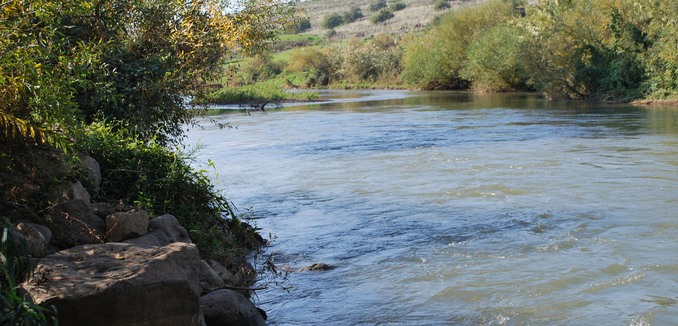Almost 90 percent of Israeli wastewater is purified and used in irrigation, making it an undisputed world leader in this field, Haaretz reported on Sunday, citing a new report by the country’s Water Authority. Spain, the second-place country, recycles 20 percent of its wastewater, compared to Israel’s 87 percent.
Israel is also a pioneer in desalination, operating Sorek — the world’s largest seawater desalination plant — some 10 miles south of Tel Aviv. While desalinization can be an energy intensive and expensive enterprise, the advanced technologies employed at Sorek allow it to produce a thousand liters of drinking water — about what one person in Israel uses in a single week — for 58 U.S. cents.
Israel aims to produce 200 billion gallons of potable water annually through five major desalination plants by 2020, and has shared its expertise in the field to help address water shortages globally, from Egypt to California.
In How Israel Is Solving the Global Water Crisis, which was published in the October 2015 issue of The Tower Magazine, editor David Hazony offered a brief history of how Israel came to lead the world in recycling wastewater.
But Israelis have led the way in another revolution in water technology: The recycling of waste. Now, you probably don’t want to hear about how what goes out through our toilets can be reused to grow carrots, but listen carefully anyway. When gritty New Yorkers take a shower, the runoff ends up in the East River. In Washington, D.C., a rainstorm hits the streets and washes away all the dirt and garbage and spilled beer and political bile into the sewers, and from there it all ends up in the ocean. American wastewater is treated minimally to prevent environmental damage. In some countries it’s not treated at all, polluting rivers and oceans.
In Israel, however, fully 85 percent of that highly purified sewage gets reused for agriculture. Another 10 percent is used to increase river flow and fight forest fires. Only five percent is released into the sea. The country with the second-highest use of recycled water is Spain. They recycle about 25 percent.
Like the others, this Israeli innovation long predates the dotcom era, going all the way back to the 1950s. Understandably, farmers were a bit squeamish at first about using sewage for food production, and a huge amount of work had to go into figuring out how to keep both the food and the sources of fresh water—some of them in aquifers beneath the farms—free of toxins. The big breakthrough came in the 1970s, when seven municipalities in the Tel Aviv area experimented with pumping wastewater into sandy dunes about eight miles south of the city. The sand, it was hoped, would act as a natural filter, directing the water over time into a nearby aquifer. It worked. The treated water (known as “effluent water”) was pumped further south, where it is now used in agriculture. The natural process takes about six months to a year, but what comes out the other end is nearly fresh, usable for anything but drinking.
By the 1990s, Israel had built a vast series of treatment facilities and a reservoir infrastructure capable of treating, storing, and delivering reclaimed water from the sewage of nearly every municipality in the country. “Reclaimed water transformed Israel’s water profile,” Siegel writes. “And no less than with the role of drip irrigation and specially bred, drought-resistant seeds, the comprehensively treated sewage water changed the agricultural landscape, permitting Israel to feed itself and to be an agricultural exporter of significance—whether in years of rain or scarcity.”
Today, nearly half the water used for agriculture in Israel comes from highly treated waste.
[Photo: Bill Rice / Flickr ]




